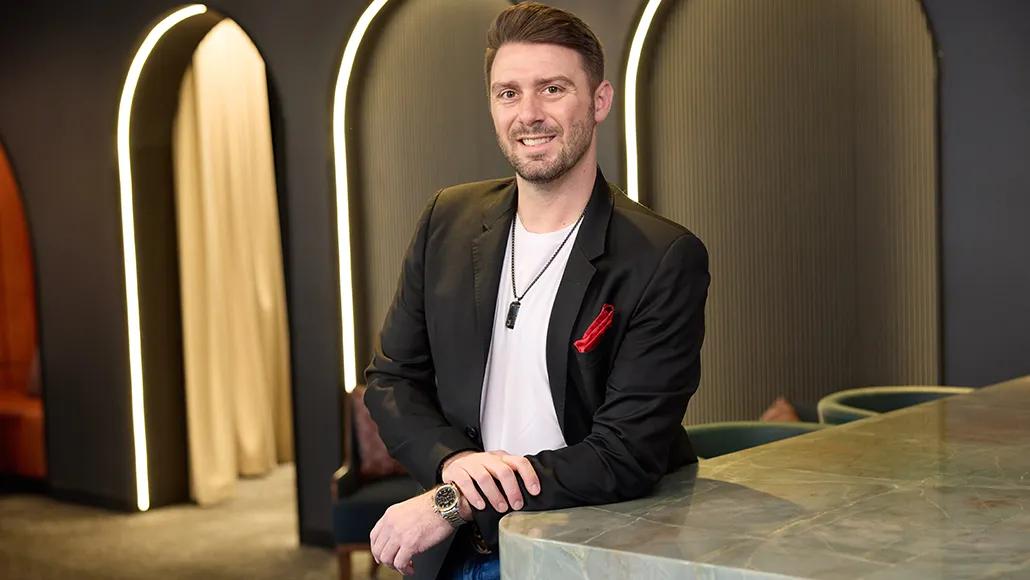Talent Development Leader
Selling AI-Backed Learning
GoHealth’s L&D team leverages simulations and technology to bolster training programs.
Mon Apr 21 2025

As a health insurance marketplace and Medicare-focused digital health company, GoHealth uses artificial intelligence and other technologies to increase the capabilities and efficiency of its sales and customer service agents. Enrolling in a health insurance plan is complicated, and small differences between plans can lead to users experiencing significant out-of-pocket costs or issues accessing critical medicines and providers.
According to Jay Fortuna, vice president of learning and organizational development for GoHealth, questions such as “How do I show return on investment?” and “Does our work add value?” are the most important ones that the talent development function must address.
Just like GoHealth uses technology to help customers cut through the confusion and enroll in a plan that works best for them, Fortuna intends to answer those questions by implementing innovative, AI-based solutions to train employees and equip them with an easily accessible, just-in-time knowledge base.
Smarter simulations
“Every salesperson hates role plays,” explains Fortuna. “One person plays the sales rep; another person plays the customer. Neither of them has ever done the scenario before, and a group of people are watching.” Further, during traditional role plays, those watching must offer forced feedback.
“It’s an uncomfortable and unrealistic learning experience,” Fortuna states, one that “is often superficial and unhelpful.”
He asserts that a virtual simulation offers a smarter alternative because simulations that use AI enable sales agents and customer service representatives to practice role plays with customers in a safe and objective environment.
In contrast to traditional role-play scenarios, the software simplifies results. Fortuna notes that “It tells them: You scored a 50 percent because you missed these three compliance issues and you hesitated in these two areas. Let’s try it again, and we’re going to focus on those pieces when they come up.”
To build GoHealth’s sales simulations, the L&D team deploys an off-the-shelf product that uses prompts to guide developers through the creation process. Developers use collateral from their existing face-to-face role-play exercises such as information about the sales workflow and fleshed-out scripts that include potential objections from customers and responses from sales agents. Once the team loads collateral into the tool, the AI system generates a realistic conversation where sales agents can interact with virtual customers.
In addition, a plug-and-play feature within the tool enables designers to use in-house personas—mainstay characters the team has already developed that look and sound the same across all the simulations. L&D defines details such as age, occupation, pain points, and buying habits. The team can also incorporate personality traits, such as assertive or cautious, and mood to build life-like characters.
The ease of the tool and its AI component empowers the team’s frontline facilitators who are more familiar with the intricacies of the role-play interactions to spearhead development rather than rely solely on instructional designers.
“[Generative] AI helps us through the whole process. We don’t need to know how to code. It’s simple drag and drop,” Fortuna states.
When sales agents interact with a character, the platform provides feedback on users’ communication style, responses to questions, and overall approach to the transaction. The feedback directly aligns with preset information that facilitators feed the AI system. The simulation also gives users a scorecard upon completion, which can include tips from Fortuna and his team.
“We can plug learning into the back end of the sim,” he explains. “Feedback can say, ‘Hey, you missed this piece, so check out this microlearning.’ In 30 seconds, they’ll know what to do and say next time.”
Using an AI-backed simulation means a machine learning element can gather vital data from sales team members as they run through the role plays. Fortuna notes that the team typically reviews data monthly, but it also accesses weekly reports when testing a new simulation or updating one already in play.
“AI can tell us what people are saying. For example, we learn about new objections from customers that we didn’t even realize existed. Based on that info, we can go in and make tweaks to the script. AI lets us continuously make improvements,” he says.
Fortuna praises the approach as a “great way to learn from the company’s top performers and start plugging in their responses and style into the role plays and feedback.”
He admits that some staff were uncertain when L&D initially rolled out the new simulations. But over time, sales representatives have come to appreciate how the simulation delivers impartial feedback. “It took a little time to get end users to trust what they were using. But once they saw that the quality was good, they were onboard.”
Users also bought in because simulations make better use of their time.
“Let’s say we only have an hour. In that time, users can run through a simulation six times, and the feedback from the AI focuses their time on the areas they need the most help with,” Fortuna says. “That repetition is building muscle for when they have to work with customers. It exponentially accelerates how fast they can get good at doing something the right way.”

A natural knowledge center
Realistic role plays aren’t the only way Fortuna applies AI to improve employee performance. The L&D team has built a large language model knowledge center that uses word-search functionality and an interactive chatbot named Sarah to assist employees while they answer customers’ most pressing questions.
To build the knowledge center, the team used information the company had already compiled and vetted. Content covers everything from details about Medicare plans and benefits to enrollment processes and procedures to guidance on key features of GoHealth’s customer-service platform to best practices for responding to difficult calls. Responses may be a few words or a link to an internal job aid, partner article, or microlearning asset.
“When reps or sales agents have a question, they can go to the chatbot rather than ping a manager or co-worker,” says Fortuna. “Using conversational language, they can type in a question to Sarah and she returns a just-in-time answer that keeps them in the flow of work.”
Fortuna clarifies that, because staff work in regulated industry, the search function only scans content available exclusively in the knowledge center rather than the internet. A designated staff member maintains internal information for accuracy, relevance, and timeliness.
“Each quarter, we check every single asset, article, and data component,” Fortuna adds. “We look at any change that could happen throughout the day, the week, the month, the year. We ask SMEs if the information is still valid or if something needs updating.”
As new products, regulations, or other information roll out, the L&D team updates information and assets on the back end to immediately correspond with any questions users may have.
“Recently, when a new regulation was announced, I posed a question about it to Sarah. When the question kicked back no results, I took a screenshot and asked the knowledge center manager where we were on this release. Within 30 minutes, he was able to add the necessary intel and anyone in the company could get a response from Sarah with the information they needed on the regulation,” Fortuna shares.
Similar to the training simulations, AI creates a weekly report on the knowledge center activity, detailing how many people asked questions, what questions they asked most often, and whether Sarah was unable to answer any of the queries.
“Our employees are constantly helping feed the knowledge base. They tell us what they need to know. The AI—and the team—are always listening and learning,” Fortuna states. “Based on users’ questions, I might realize we have some trainings that people aren’t using. If that’s the case, I know I need to remarket and push those trainings out to certain teams.”
Realizing ROI
The results of Fortuna’s efforts speak for themselves. Thanks to the technological implementations, sales training time decreased from 11 weeks to five weeks. GoHealth realized increased proficiency among the sales agents’ key performance indicators, with a notable boost to conversion rates and quality assurance. Sales agents were 20 percent more effective in the first year.
“We don’t do anything on the learning team without tracking it,” Fortuna says. “We’re always asking: Did this do what we wanted us to do? Did we get the result?”
AI and other technologies have enabled the L&D team to create content nearly 50 percent faster, giving Fortuna and his employees the time to extend their efforts beyond sales and customer support. The team is currently exploring simulations for leadership development and coaching. In addition, departments such as IT and HR have requested that the knowledge center expand to include relevant content for their teams.
“Finally, our people are getting to do more of the things that we’ve always said the organization needed but just didn’t have time for,” Fortuna reveals. “We’re able to deliver foundational and operational learning faster, so now can start building trainings and tools that are transformational. That transformational learning and support is where we really start to see ROI. That’s when we make our impact.”
